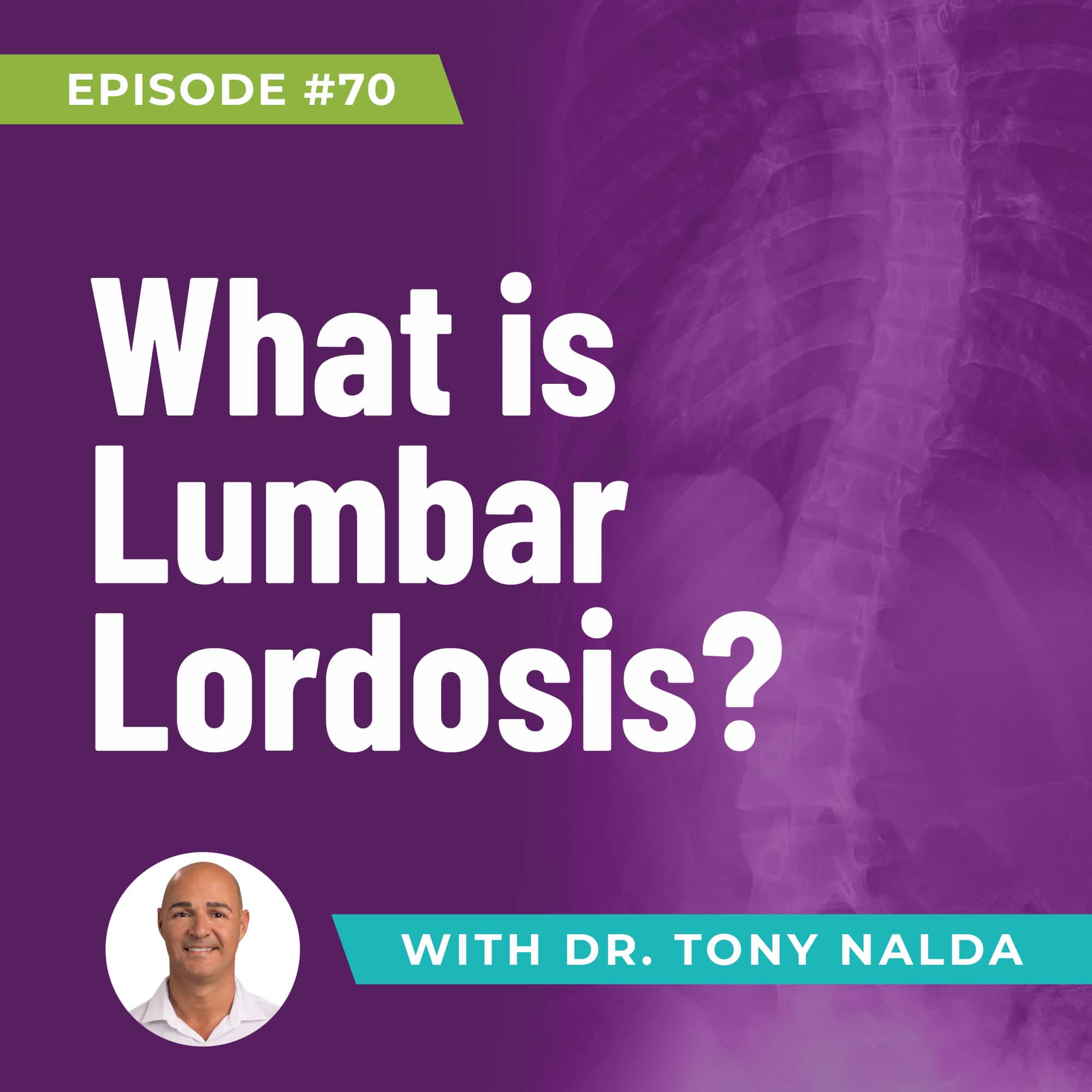Episode 70: What is Lumbar Lordosis?
When patients have their spine examined, the term lumbar lordosis often gets thrown around during discussions about spinal health. In today’s episode, we discuss the world of spinal curvatures, demystifying their significance, and uncovering secrets behind lumbar lordosis.
Lordosis vs Kyphosis
These are different types of spinal curvatures, like the graceful bends of a bridge that give it strength and flexibility. In essence, these curvatures exist to help our spine better handle the everyday stresses of life.
Imagine kyphosis as a gentle backward bend, while lumbar lordosis is its opposite, a subtle forward curve. Each curvature has its designated area in the spine – kyphosis in the mid-back (thoracic spine), and lumbar lordosis in the lower back (lumbar spine). It's like a choreographed dance of curves that contribute to our spinal health. But lumbar lordosis isn't just a one-size-fits-all deal. Just like people, spines come in various shapes and sizes. Ideally, lumbar lordosis should be around 40 degrees, but a bit of flexibility exists. Think of it like a normal range for blood pressure – there's a sweet spot, but some wiggle room is okay.
What’s interesting is that too much or too little of lumbar lordosis can lead to problems. Imagine if your blood pressure were sky-high or too low – not good, right? Similarly, if lumbar lordosis goes off-balance, it can result in various spinal issues, often causing discomfort and pain. And it's not just limited to the lower back; it can ripple through your entire spinal alignment.
Causes of the loss of lumbar lordosis or hypo lordosis in the lumbar spine
- Spinal Fusion and Scoliosis Surgery: Procedures like spinal fusion, especially in cases of scoliosis surgery with devices like Harrington rods, can lead to a flattening of the spine's natural curvature. This flattening can result in a decrease or loss of lumbar lordosis.
- Trauma and Injury: Significant trauma or injury to the spine can disrupt its normal alignment, potentially causing a decrease in lumbar lordosis. Such incidents can shift the spine out of its proper position, impacting its curvature.
- Global Loss of Alignment: When the overall alignment of the spine is compromised, it can lead to a reduction in lumbar lordosis. This can occur due to various factors, including poor posture, muscle imbalances, and degenerative changes in the spine over time.
- Degenerative Disc Disease: The degeneration of spinal discs, which act as cushions between vertebrae, can contribute to a decrease in lumbar lordosis. As the discs lose their height and hydration, the spine's natural curvature may be affected.
- Ankylosing Spondylitis: An autoimmune disorder known as ankylosing spondylitis can lead to fusion of ligaments and discs in the spine. This fusion can alter the spine's curvature and result in a reduction of lumbar lordosis.
It's important to note that any loss or abnormality in lumbar lordosis can have implications for spinal health and overall well-being. Maintaining proper spinal alignment through exercises, ergonomic practices, and proactive care is essential to prevent these issues and promote a healthier spine.
For more spine health tips, check out Dr. Tony Nalda’s podcast.
Artlist.io 847544
Podcast: Play in new window | Download
Subscribe: RSS
Dr. Tony Nalda
DOCTOR OF CHIROPRACTIC
After receiving an undergraduate degree in psychology and his Doctorate of Chiropractic from Life University, Dr. Nalda settled in Celebration, Florida and proceeded to build one of Central Florida’s most successful chiropractic clinics.
His experience with patients suffering from scoliosis, and the confusion and frustration they faced, led him to seek a specialty in scoliosis care. In 2006 he completed his Intensive Care Certification from CLEAR Institute, a leading scoliosis educational and certification center.
About Dr. Tony Nalda
 Ready to explore scoliosis treatment? Contact Us Now
Ready to explore scoliosis treatment? Contact Us Now








